
When we talk about papyrus, we’re not referring to a quirky font or the skeleton from the game “Undertale.” Instead, we mean one of the earliest known materials used for writing, an ancient form of paper made from the papyrus plant. Long before the invention of modern printing, papyrus played a crucial role in preserving knowledge. In this article, we’ll explore its origin, production, and legacy in printing terms.
Definition: Papyrus
Papyrus is an early form of writing material that was used in Ancient Egypt and other Mediterranean cultures. It was made from the stalks of the Cyperus papyrus plant.
Unlike today’s paper, produced by pulping plant fibers into a smooth sheet, papyrus was created by layering natural strips, resulting in a more fragile and fibrous texture. It was used in scrolls, not books, and could easily tear or degrade in humid climates.
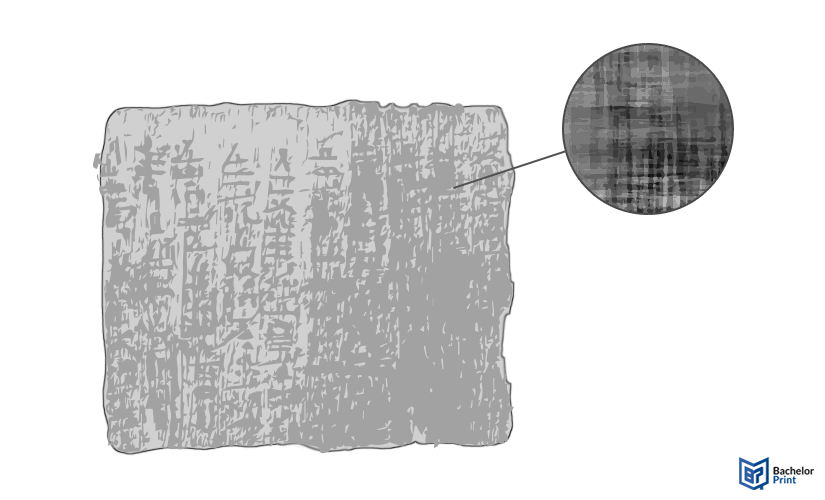
Etymology
The word papyrus comes from the Greek “papyros,” which was borrowed into Latin and then English. Its exact origin is unclear, but it may come from a language spoken before Greek.
Interestingly, the Greeks also used the word “byblos” for the same plant when referring to writing material. This word later gave us terms like “bibliography” and “Bible.” Over time, papyrus also became the root for the modern word paper.
Your guide to print and production
- Information on print finishing & print processing
- Information on materials & optimal use of materials
- Information on printing processes & print production
Learn more!
Historical background
Papyrus originated in Ancient Egypt over 5,000 years ago and became the standard writing surface for centuries. Egyptians harvested the papyrus plant from the Nile Delta and used it not only for documents but also for boats, mats, and baskets.
From Egypt, the use of papyrus spread to Greece and later to Rome, where it became essential for recording literature, religious texts, laws, and trade records. It played a vital role in early administration and education. The Greek word “byblos,” referring to the Phoenician city of Byblos, was also used to describe papyrus, as Byblos was a major trading hub for the material. This term later evolved into modern words like “bible” and “bibliography,” linking papyrus to the history of written texts.
However, papyrus was fragile in humid climates and difficult to produce in large sizes. Over time, it was gradually replaced by more durable materials like parchment (made from animal skins) and vellum paper (a finer type of parchment typically crafted from calfskin). Eventually, paper, which was easier to manufacture and transport, became the global standard.
Manufacturing process
- The Cyperus papyrus was harvested from the Nile Delta.
- Only the inner pith of the stalk was used, outer layers were removed.
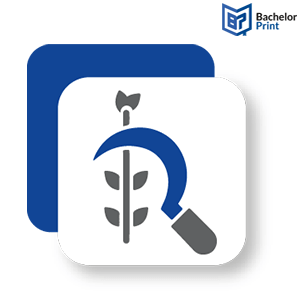
- The pith was sliced into long, thin strips using a sharp knife.
- Strips were typically around the same width to form even sheets.
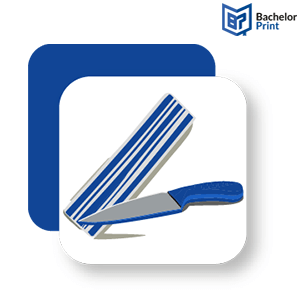
- One layer of strips was laid vertically.
- A second layer was placed horizontally on top, forming a crisscross pattern.
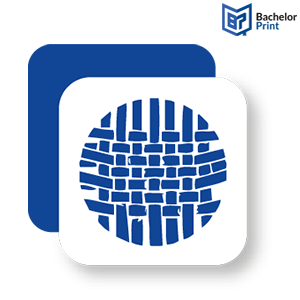
- The layers were pressed together using stones or wooden boards.
- Natural plant sap acted as an adhesive to bond the layers.
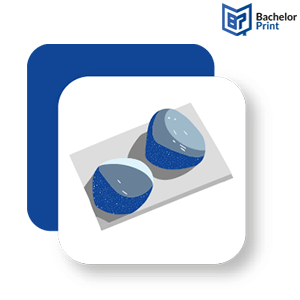
- Sheets were left to dry in the sun.
- They were polished with a shell/smooth stone to create a writable surface.
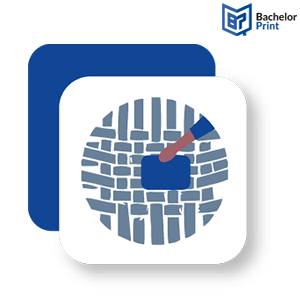
Tools and materials
A knife was used to cut the inner pith into strips, which were then layered on a flat surface and pressed with weights like stones or boards. After drying in the sun, the sheets were polished with smooth objects such as shells or stones to prepare them for writing.
Durability and limitations
Papyrus was lightweight, flexible, and easy to make using local materials. However, it was fragile in humid climates, prone to mold, and unsuitable for long-term storage. Its surface was also fibrous and rough compared to modern paper, making fine writing harder.
Printing services at BachelorPrint
- Individual solutions & personal support
- High print quality & fast production times
- Wide range of print products for every need
Learn more!
Papyrus in printing terms
Papyrus was a key material in ancient writing and influenced early printing practices. This section explores how it shaped printing terms and techniques that are still used today.
Papyrus played a significant role in the early days of writing and printing, laying the foundation for many printing terms still in use today. Concepts like scroll, manuscript, and volume have their origins in papyrus usage, as it was primarily used for scrolls in ancient times.
Papyrus was the medium of choice for writing before the advent of modern paper. Early printing practices, such as engraving and the use of presses, were influenced by the way text was copied onto papyrus scrolls. Scrolls were often laboriously handwritten, and the use of printing presses in the 15th century helped to replicate this process more efficiently.
Papyrus scrolls were typically rolled up and stored in cylindrical containers, while modern books are bound in pages. The transition from scrolls to bound books marked a significant shift in how knowledge was stored and distributed, with papyrus serving as a precursor to the book format we use today. While scrolls were often cumbersome and less practical for mass production, the shift to bound pages facilitated easier access to written material.
Many terms used in the printing industry have roots in the papyrus era.
Thus, the transition from papyrus to modern materials shaped both the methods of printing and the language used in the industry.
Papyrus vs. parchment vs. paper
Papyrus, parchment, and modern paper are three key writing materials used throughout history. While all served the purpose of recording information, they differ in production, durability, and usability.
Papyrus
Parchment
Paper
Material
Inner pith of the Cyperus papyrus plant
Animal skins (usually sheep, goat, calf)
Pulped plant fibers (wood, cotton, or bamboo)
Production
Cut into strips, layered, pressed, dried
Soaked, stretched, scraped, carefully dried
Pulped, pressed, dried, sometimes coated
Durability
Fragile in humid climates
Durable, long-lasting
Durable, varies by quality
Texture
Fibrous, rough
Smooth, flexible
Smooth, uniform
Ancient Egypt, Greece, Rome for scrolls
Middle Ages Europe for official records
Globally, early modern period to the present day
Cost
Relatively cheap locally
Expensive, labor-intensive
Affordable, mass-producible
FAQs
Papyrus is an ancient writing material made from the stalk of the Cyperus papyrus plant, primarily used in Egypt and the Mediterranean.
No, papyrus is made by layering plant strips and pressing them together, while paper is made by pulping plant fibers into a smooth sheet.
Papyrus became less common due to over-harvesting, climate change, and the rise of more durable materials like parchment and paper.
No, papyrus is not edible. It was historically used as a writing material, not for consumption.
In ancient Greece, papyrus was used for writing scrolls, official documents, and literary works.
The Greek word “byblos,” referring to the Phoenician city, was also a synonym for papyrus due to the city’s major role in the trade of the material. This evolved into terms like bible and bibliography.